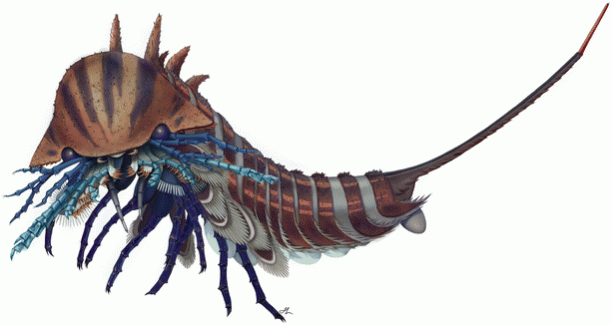
A tiny yet exceptionally fierce ancient sea predator has been identified by scientists as the earliest relative of spiders, scorpions and horseshoe crabs that exist today.
Dubbed "Habelia optata," this prehistoric creature lived during the middle Cambrian period approximately 508 million years ago. The creature, which was first discovered more than a century ago, evolved a sophisticated "jackknife" head to hunt and eat small shelly animals during its time.
The long-extinct Habelia optata was about two centimetres long with a tail as long as the rest of its body. According to scientists, this weird-looking species belongs to the group of invertebrate animals called arthropods that include spiders, insects, lobsters and crabs.
Habelia optata comes from the famous Burgess Shale fossil deposit in British Columbia, and is believed to be part of the "Cambrian explosion," a period of rapid evolutionary change when most major animal groups first appeared in the fossil record. The Scientists explained the findings in a study, published in the journal BMC Evolutionary Biology on Wednesday.
Like all arthropods, Habelia optata also features a segmented body with external skeleton and jointed limbs. However, scientists were unable to determine the main sub-group of arthropods to which Habelia belonged.

According to the new study, conducted by researchers at the University of Toronto, Habelia optata was a close relative of the ancestor of all chelicerates, a sub-group of arthropods living today with appendages called chelicerae in front of the mouth to cut food.
Researchers said that Habelia optata falls under this sub-group mainly because of the overall anatomy of the head, and the presence of two small chelicerae-like appendages revealed in these fossils.
"Habelia now shows in great detail the body architecture from which chelicerates emerged, which allows us to solve some long-standing questions," Cédric Aria, a post-doctoral researcher at the Nanjing Institute of Geology and Palaeontology in China and the study's lead author, said in a statement.
The study revealed that the well-armoured body of Habelia optata was divided into head, thorax and post-thorax, all bearing different types of appendages.
"Scorpions and the now-extinct sea scorpions are also chelicerates with bodies divided into three distinct regions," Aria said. "But a major difference is that scorpions and sea scorpions, like all chelicerates, literally 'walk on their heads,' while Habelia still had walking appendages in its thorax."
According to researchers, this difference in anatomy helped Habelia optata evolve an especially complex head containing a series of five appendages for different tasks like chewing, grasping and sensing.
"This complex apparatus of appendages and jaws made Habelia an exceptionally fierce predator for its size," Aria said. "It was likely both very mobile and efficient in tearing apart its preys."

















